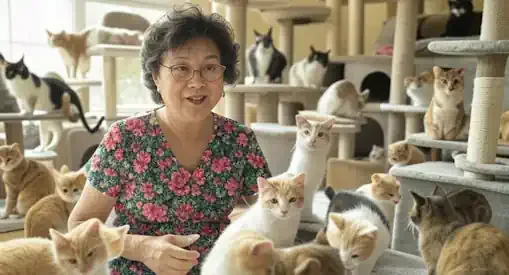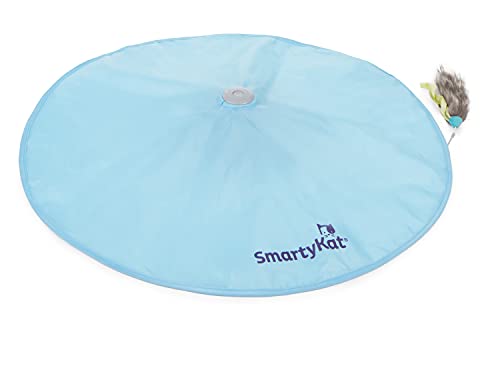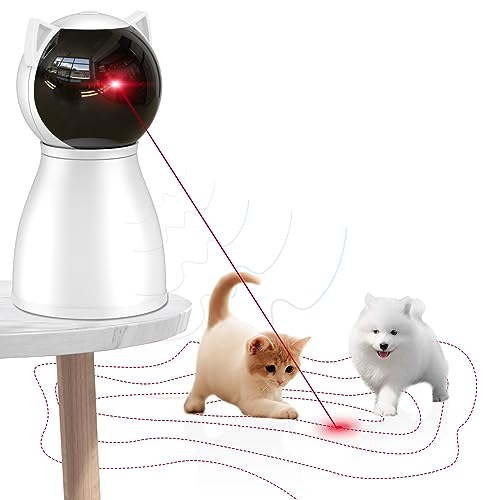The image flickers in our collective consciousness: the “Cat Lady.” Perhaps she’s envisioned in a dimly lit, somewhat cluttered apartment, surrounded by a veritable feline kingdom, her own attire mirroring a certain… disarray. This is the stereotype, ingrained through decades of media and societal whispers, a portrait often tinged with pity, eccentricity, and a subtle suggestion of loneliness. Contrast this with a newer image, one increasingly visible in the vibrant tapestry of modern life: a woman, poised and confident, perhaps in a stylishly minimalist apartment, openly sharing affection with her feline companion on social media, seamlessly blending a thriving career with a clearly cherished cat-centric lifestyle. This shift, this stark juxtaposition, speaks volumes. The “Cat Lady Mystique” is being rewritten, reimagined, and, in many ways, reclaimed.
The term itself, “Cat Lady,” carries a weight, a historical baggage accumulated over time. It's a label laden with negative connotations, born from societal anxieties and deeply rooted stereotypes. Historically, it's been a term used, often dismissively, to categorize women, particularly unmarried women, who demonstrated an affinity for cats. The negativity stems from a complex interplay of factors, touching upon societal pressures on women, fears surrounding aging and independence, and even whispers of outdated and frankly misogynistic psychological interpretations. The traditional "Cat Lady" was often painted as isolated, eccentric, perhaps a little desperate for companionship – animals as a somewhat pathetic substitute for human connection. The connotations were seldom flattering: loneliness, social awkwardness, a touch of "craziness," even a sense of being somehow incomplete or unfulfilled without a traditional romantic partner or family structure.
However, look around, listen to conversations, scroll through social media, and the air feels different. While the outdated stereotype hasn't vanished entirely, a palpable shift is underway. There’s a growing nuance in the way we perceive women who choose feline companionship as solo guardians. It's moving beyond simple tolerance to something akin to acceptance, even admiration. The modern “Cat Lady” is not a figure of ridicule; increasingly, she’s a symbol of independence, self-sufficiency, compassion, and a lifestyle choice that is both valid and increasingly celebrated. The “mystique,” once a shroud of negative judgment, is being transformed into something far more complex and compelling, reflecting a society slowly but surely catching up to the realities and evolving values of modern womanhood.
To truly understand this transformation, we must first delve into the murky depths of the stereotype itself, deconstructing the “Cat Lady Mystique” and tracing its origins. The roots are deeply embedded in historical and cultural anxieties, particularly those surrounding women who deviated from societal norms. Historically, immense pressure has been placed upon women to marry and bear children. This expectation was not merely a social norm; it was often seen as a woman's primary purpose, her path to fulfillment and societal acceptance. The “Cat Lady” stereotype emerged, in part, as a way to categorize and, in many ways, marginalize women who did not conform to this rigid expectation. Unmarried women, spinsters as they were often pejoratively called, became figures of societal anxiety, representing a perceived deviation from the prescribed female trajectory. They were seen as existing outside the accepted social order, and this deviation, in turn, could be negatively framed and caricatured.
Adding to this was the societal fear of aging, particularly for women. Youth and beauty were, and to a degree still are, heavily emphasized in societal expectations of women, and aging women living outside traditional family structures became particularly vulnerable to negative stereotyping. The “Cat Lady” figure often became conflated with the aging spinster trope, reinforcing anxieties about women growing older alone, perceived as less desirable, and perhaps resorting to animal companionship as a form of consolation prize in a life deemed unfulfilled. Even more subtly, historical associations, though perhaps less consciously present today, may have contributed to the negative undercurrent of the "Cat Lady" stereotype. For centuries, women living alone, particularly those with an affinity for animals, have been linked, however faintly, to notions of witchcraft and the occult. While not overtly stated, the image of a solitary woman with animals, particularly black cats, may have subtly drawn upon these older, darker associations, further contributing to the unease and negative perception surrounding the “Cat Lady.”
Media has played a powerful role in perpetuating and solidifying the “Cat Lady” stereotype. Film and television are rife with examples of "Cat Lady" characters, almost invariably portrayed as eccentric, lonely, and often bordering on unstable, used as comedic figures or objects of pity. Think of the well-meaning but ultimately lonely spinster aunt in countless films, her house overflowing with cats, her social life non-existent. Think of cartoon depictions, often exaggerated for comedic effect, showing women swamped by dozens of felines, their lives comically ruled by their pets. Sitcoms often employ the “Cat Lady” as a punchline, a quick shorthand for social awkwardness or a slightly off-kilter personality. Literature and folklore, too, have contributed to this imagery, reinforcing negative associations and tropes. From fairy tales to modern novels, the solitary woman with numerous animal companions is often portrayed as slightly peculiar, isolated, or even harboring hidden, perhaps slightly unsettling, depths. These consistent media portrayals, repeated across decades and genres, have deeply ingrained the negative connotations of the "Cat Lady" archetype into our collective consciousness, solidifying it as a readily understood, and often ridiculed, figure.
Even outdated psychological interpretations have, in their time, attempted to "explain" the “Cat Lady” phenomenon, often in ways that pathologize women who prioritize animal companionship or live alone with cats. Simplistic psychological viewpoints, often lacking nuance and tinged with societal biases, have sometimes framed this as a "substitute" for human connection, suggesting that women who are "Cat Ladies" are somehow unable to form or maintain meaningful human relationships, turning to animals to fill a perceived void. These views, however, are increasingly being recognized as deeply flawed and potentially misogynistic. They fail to understand the complex nature of human relationships, the validity and depth of human-animal bonds, and the diverse ways individuals find fulfillment and connection in their lives. Such pathologizing interpretations often stem from a narrow, traditional view of what constitutes a “normal” or “healthy” life for a woman, failing to acknowledge the richness and validity of alternative lifestyle choices. It's crucial to move beyond these simplistic and potentially harmful explanations and embrace a more nuanced understanding of the motivations and experiences of women who choose to share their lives with feline companions.
The real-world impact of this negative stereotype is far from trivial. The "Cat Lady" label has contributed to real social stigma and judgment directed towards women who fit the mold, impacting their social lives, dating prospects, and even their own self-perception. Women who are perceived as "Cat Ladies" may face social isolation, be subject to ridicule or condescension, and find themselves judged unfairly based on a simplistic and often inaccurate stereotype. Dating can become fraught with anxieties, as women worry about how their love for cats will be perceived by potential partners, fearing being dismissed as “too much” or “undesirable.” Perhaps most damagingly, some women may internalize these negative stereotypes, developing feelings of shame or self-consciousness about their genuine love for cats and their chosen lifestyle, feeling pressured to downplay or hide a significant and positive aspect of their lives to avoid judgment.
But thankfully, the tide is turning. Several powerful forces are converging to challenge and ultimately transform the perception of the "Cat Lady," pushing society towards a more nuanced and ultimately positive embrace of solo feline guardians. One of the most significant drivers of this shift is the dramatic change in societal norms and lifestyles, particularly concerning women's roles and life choices. We are witnessing a global trend towards delayed marriage and an increasing number of individuals, particularly women, choosing to live alone. This demographic shift reflects a fundamental change in societal structures and expectations. Marriage is no longer seen as the sole or even primary path to fulfillment for women. Women are increasingly prioritizing education, careers, personal growth, and self-discovery, and are making conscious choices about relationship structures that best suit their individual needs and desires. Living alone is no longer automatically equated with loneliness or failure; for many, it’s a chosen lifestyle, offering independence, autonomy, and space for self-expression.
Concurrent with these lifestyle shifts is the evolution of women's roles in society. The emphasis on female independence, career aspirations, and self-determination is stronger than ever before. Women are increasingly defining their own paths, breaking free from traditional expectations of marriage and motherhood as their sole measures of success. In this evolving landscape, the “Cat Lady” archetype can be reinterpreted as a symbol of this very independence – a woman making a conscious choice to live life on her own terms, prioritizing companionship and emotional fulfillment in a way that aligns with her own values, rather than societal dictates. This broader societal trend towards accepting diverse lifestyles and choices also plays a critical role. We are gradually moving towards a more inclusive and tolerant society that recognizes and validates a wider spectrum of life paths and relationship structures. This includes acceptance of different family configurations, chosen families, and even the validity of human-animal bonds as significant sources of companionship and emotional support. As society becomes more accepting of diverse lifestyles, the "Cat Lady," once an outlier, begins to appear simply as one valid and increasingly common way of living.
The internet, particularly the explosion of cat culture online, has been instrumental in reshaping the “Cat Lady” narrative. The internet cat fandom is a global phenomenon, a testament to the universal appeal of felines. Memes, videos, and entire social media accounts dedicated to cats abound, showcasing cats not as symbols of loneliness or eccentricity, but as universally loved, celebrated, and even revered creatures. Online cat communities have sprung up across platforms, fostering a powerful sense of belonging and shared identity among cat lovers worldwide. These communities normalize and celebrate cat ownership across all demographics, powerfully including and validating solo women who choose feline companions. Crucially, the internet provides a platform for self-representation and counter-narratives. Women are using social media to proudly showcase their lives as “Cat Ladies” in positive and empowering ways, directly challenging the outdated stereotype and presenting a more authentic, joyful, and contemporary image.
Furthermore, there’s a growing societal re-evaluation of solitude and self-care, further bolstering the positive reframing of the “Cat Lady.” Solitude is no longer automatically perceived as synonymous with loneliness. Increasingly, solitude is recognized and valued as a conscious choice, a necessary space for self-reflection, creativity, personal growth, and mental well-being. In a world saturated with constant connectivity and social demands, the ability to find solace and rejuvenation in solitude is becoming increasingly prized. Cats, in this context, emerge as ideal companions for those who value solitude. They offer quiet companionship, a comforting presence without demanding constant attention or social interaction, perfectly suited for individuals who cherish their alone time but also crave connection. Cat ownership, particularly for those living alone, is also increasingly linked to self-care practices. The calming presence of a cat, the rhythmic purr, the gentle routines of caregiving, all contribute to stress reduction and overall well-being. Caring for another being, nurturing and being nurtured in return, can be a profoundly self-affirming and emotionally rewarding aspect of self-care.
Finally, and perhaps most fundamentally, the evolving understanding of the human-animal bond is at the heart of this shift. We are moving beyond the outdated and simplistic view of pets as mere property or possessions. There’s a growing societal recognition of the deep emotional and psychological bonds that humans can, and do, form with animals. Cats are no longer relegated to the status of aloof, uncaring creatures, as outdated stereotypes once suggested. They are increasingly recognized as intelligent, emotionally complex beings capable of providing meaningful companionship and genuine emotional support. Science is increasingly backing up this intuitive understanding, with a growing body of research highlighting the tangible positive impact of pet ownership on human mental and physical health. This evolving understanding elevates the status of cats as legitimate companions, validating the deep connections women form with their feline friends and challenging the outdated view that these bonds are somehow “lesser than” or a “substitute” for human relationships.
This societal shift isn't just about tolerance; it's moving towards a positive reframing and even empowering narrative around the "Cat Lady" archetype. There's a feminist reclaiming of the label underway, with many women actively reappropriating “Cat Lady,” turning it into a badge of honor, a symbol of independence, self-reliance, and conscious choice. Choosing to be a "Cat Lady" can be seen as an empowered decision, a deliberate rejection of societal pressures to conform to traditional relationship and lifestyle expectations. It's a declaration of agency, a celebration of living life on one's own terms, finding fulfillment and joy outside of prescribed norms. In this light, the "Cat Lady" archetype becomes a quiet revolution, a challenge to traditional narratives that define female fulfillment solely through romantic partnerships and family structures, suggesting alternative and equally valid paths to happiness and a well-lived life.
This positive reframing also celebrates female independence and the growing recognition of non-traditional life paths. Society is increasingly valuing diverse life choices, acknowledging that happiness and fulfillment can be found in countless forms, far beyond conventional relationship models. The concept of “family” is expanding to include chosen families, friendships, and, importantly, human-animal bonds. “Home” is being redefined, less as a traditional nuclear structure, and more as a place of comfort, companionship, and emotional security, regardless of whether it conforms to societal norms. The “Cat Lady,” in this context, becomes a potent symbol of female autonomy, a celebration of a woman's right to define her own life, her own happiness, independent of societal pressures or outdated expectations.
Increased visibility and more positive representation in media are further cementing this shift. While older media often relied on negative stereotypes, contemporary portrayals of "Cat Ladies" are becoming more nuanced and increasingly positive. We are seeing characters in film, television, and literature who are intelligent, successful, happy, and fulfilled, with their cats presented as a positive aspect of their lives, not a marker of failure or eccentricity. Social media, once again, plays a vital role, offering a platform for women to control their own narratives and showcase positive and empowering images of "Cat Lady" lifestyles. This increased visibility, across media and online platforms, normalizes the lifestyle, dismantles negative stereotypes through sheer weight of positive counter-examples, and creates a more accepting and celebratory cultural landscape.
Crucially, we are beginning to recognize and value the very real mental and emotional benefits that cats bring to their guardians, particularly to those living alone. Cats provide comfort, companionship, and unwavering emotional support, offering a silent, furry presence that can be profoundly comforting and grounding, especially for those navigating the challenges of solo living. Documented benefits of cat ownership, including reduced loneliness, decreased anxiety, and lower stress levels, are becoming more widely recognized, contributing to a growing understanding of the positive impact cats have on mental well-being. Society is slowly expanding its understanding of emotional connection, moving beyond a narrow focus on human-to-human relationships and acknowledging that emotional needs can be met and lives enriched through diverse forms of connection, including the profound and often underestimated bond between humans and animals.
Looking ahead, the future of the "Cat Lady" image seems poised for continued evolution. Will the negative stereotype eventually fade entirely? Perhaps. Will the term be fully re-embraced as a positive archetype, a symbol of empowered female independence and compassion? It's certainly trending in that direction. It’s also possible that the label itself will become less gendered over time. As societal acceptance of diverse lifestyles continues to grow, the focus may shift away from gendered labels altogether, simply recognizing and celebrating individual choices in companionship and lifestyle, regardless of whether those choices involve cats or conform to traditional norms. Ultimately, the journey of the “Cat Lady Mystique” is a reflection of broader societal shifts in values and perceptions. It underscores the importance of celebrating individual choices, respecting diverse lifestyles, and recognizing the profound and enduring power of feline companionship. The “Cat Lady,” once a figure of pity or ridicule, is increasingly becoming recognized for who she often is: a symbol of independence, compassion, self-sufficiency, and a uniquely valid and increasingly celebrated way of navigating the world, purring all the way.







